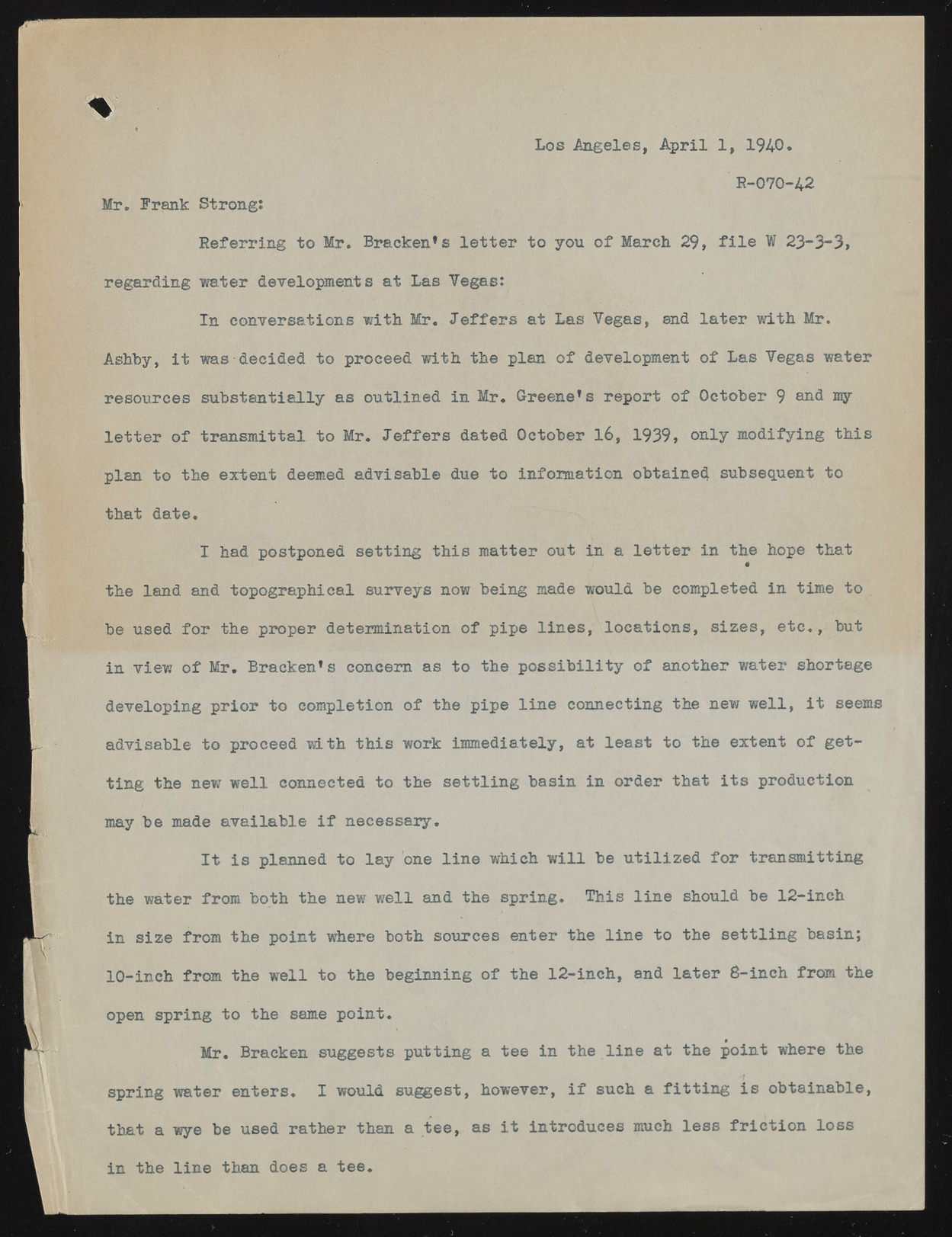Copyright & Fair-use Agreement
UNLV Special Collections provides copies of materials to facilitate private study, scholarship, or research. Material not in the public domain may be used according to fair use of copyrighted materials as defined by copyright law. Please cite us.
Please note that UNLV may not own the copyright to these materials and cannot provide permission to publish or distribute materials when UNLV is not the copyright holder. The user is solely responsible for determining the copyright status of materials and obtaining permission to use material from the copyright holder and for determining whether any permissions relating to any other rights are necessary for the intended use, and for obtaining all required permissions beyond that allowed by fair use.
Read more about our reproduction and use policy.
I agree.Information
Digital ID
Permalink
Details
More Info
Rights
Digital Provenance
Publisher
Transcription
Los Angeles, April 1, 19A0. R-070-42 Mr. Prank Strong: Referring to Mr. Bracken’s letter to you of March 29, file W 23-3~3> regarding water developments at Las Yegas: In conversations with Mr. Jeffers at Las Yegas, and later with Mr. Ashby, it was decided to proceed with the plan of development of Las Yegas water resources substantially as outlined in Mr. Greene’s report of October 9 and my letter of transmittal to Mr. Jeffers dated October 16, 1939, only modifying this plan to the extent deemed advisable due to information obtained subsequent to that date. I had postponed setting this matter out in a letter in the hope that the land and topographical surveys now being made would be completed in time to be used for the proper determination of pipe lines, locations, sizes, etc., but in view of Mr. Bracken’s concern as to the possibility of another water shortage developing prior to completion of the pipe line connecting the new well, it seems advisable to proceed with this work immediately, at least to the extent of getting the new well connected to the settling basin in order that its production may be made available if necessary. It is planned to lay one line which will be utilized for transmitting the water from both the new well and the spring. This line should be 12-ineh in size from the point where both sources enter the line to the settling basin; 10-inch from the well to the beginning of the 12-inch, and later 8-inch from the open spring to the same point. Mr. Bracken suggests putting a tee in the line at the point where the spring water enters. I would suggest, however, if such a fitting is obtainable, that a wye be used rather than a tee, as it introduces much less friction loss in the line than does a tee.

